The Distinguished Lecturer is selected each year based on a combination of outstanding research contributions to geochemistry and the ability to clearly communicate these contributions to a broad audience.
Distinguished Lecture Program 2023
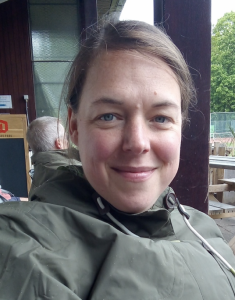 Distinguished Lecturer: Dr. Sandra Arndt
Distinguished Lecturer: Dr. Sandra Arndt
Sandra Arndt is based at the Geosciences, Environment and Society Department at the Université Libre de Bruxelles, Belgium, where she is an Associate Professor in Geology.
Sandra’s research focuses on improving our understanding of carbon cycle-climate feedbacks and their role in determining the magnitude and pace of climate change. To address these research questions, she develops and applies numerical models that synthesize our current understanding of ocean carbon cycling across traditional disciplinary and ecosystem boundaries. More info
Lecture Tour
- Tuesday 21 November: Lectures 2 and 3 at Institute of Geography and Earth Sciences, Eotvos University Budapest, Hungary, and online
- Wednesday 22 November: Lectures 1 and 2 at the Czech Geological Survey, Prague, Czech Republic
- Thursday 14 December: Lecture 1 at the Bulgarian Geological Society Annual Meeting, Sofia University, Bulgaria
Lecture Abstracts and Recordings
Lecture 1: A groggy climate giant? Assessing the potential impact of projected subsea permafrost thaw on the Arctic Ocean Carbon Cycle and Climate (1900-2300)
The Arctic is a key area of concern for carbon cycle-climate feedbacks. The rapidly warming Arctic hosts enormous, yet still poorly quantified amounts of carbon/methane that are held in thawing terrestrial and marine permafrost and associated methane hydrates. A major concern is that microbial activity in the thawing permafrost could generate carbon dioxide and methane emissions that would become sufficiently large to create a dangerous positive feedback loop in which emissions would further warm the climate, which, in turn, would accelerate permafrost thaw and release more greenhouse gases.
Yet, this potentially dangerous permafrost carbon-climate feedback currently remains one of the least quantified and most uncertain feedbacks within the climate system. In particular, carbon emissions from subsea permafrost- the relict permafrost that has been submerged by rising sea levels after the Last Glacial Maximum- remain largely unquantified and, thus, neglected in integrated assessment models and climate policy discussions.
I illustrate how we developed and applied a fully integrated panarctic model framework including geophysical models of submarine permafrost with diagenetic models and Earth System models to track greenhouse gas production and emissions in/from thawing subsea permafrost and explore its impact on the Arctic Ocean and climate system.
Lecture 2: Emergency Exit? Mitigation of extreme Oceanic Anoxic Event conditions by organic matter sulfurization in the late Cretaceous Ocean
The geologic record contains evidence of massive greenhouse gas releases to the atmosphere in the distant past. A number of negative carbon-cycle climate feedbacks help the Earth System to recover from the resulting greenhouse climates by removing the excess carbon and bury it in a form that will not quickly leak back to the atmosphere.
The late Cretaceous is marked by a series of extreme greenhouse events that turned the ocean anoxic. Under these extreme conditions, different mechanisms can make organic carbon less reactive, thus preserving and burying more carbon in marine sediments. One of these mechanisms is the sulfurization of organic matter- the reaction of organic carbon with hydrogen sulfide to form new molecules that are more resistant to being broken down by bacteria.
I illustrate how we used the geological record together with a global carbon-cycle-climate model to help understand the importance of organic matter sulfurization during the Ocean Anoxic Events 2 (‘OAE2’) and test if the amount of carbon buried helps the Earth system in recovering from greenhouse climates.
Lecture 3: Slowing climate change? Potential and risks of enhanced marine silica weathering as a negative emission technology (NET)
Global climate change is one of the biggest global challenges of the 21st century, and urgently requires ambitious, transformative, and collective action to limit global warming. This can be achieved by reducing carbon dioxide (CO2) and other greenhouse gases emissions or by actively removing CO2 from the atmosphere (“negative emissions”). Achieving the Paris climate goal requires the development of Negative emission technologies (NET) that often build on accelerating natural negative carbon-cycle climate feedbacks.
Enhanced marine silicate weathering has been proposed as a promising NET. It has been suggested that the distribution of silicate minerals to coastal marine sediments would drive high weathering rates and thus enhance the uptake of atmospheric CO2 by increasing ocean alkalinity. However, the efficiency of marine ESW in stimulating oceanic CO2 uptake remains unquantified.
I illustrate how we used an integrated model-data approach to explore the efficiency and potential environmental risks of enhanced marine silicate weathering under a range of different environmental conditions.
Videos of lectures from past Distinguished Lecture Tours are available below and a play list can also be found on our YouTube Channel here.
Distinguished Lecture Tour 2022
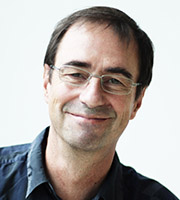 2022 Distinguished Lecturer: Prof. Bernard Marty
2022 Distinguished Lecturer: Prof. Bernard Marty
Bernard Marty is a Professor of geochemistry at the Ecole Nationale Supérieure de Géologie, University of Lorraine, and researcher at the Centre de Recherches Pétrographiques et Géochimiques (CRPG, UMR 7358 CNRS-UL), Nancy, France.
He is interested in the geochemistry and cosmochemistry of volatile elements, notably stable isotopes and noble gases, including topics such as stable isotope variations in the solar system, processes of planet formation, the origin(s) of terrestrial water and other volatiles, the geodynamical cycle of these elements, and the evolution of the atmosphere from the Hadean eon to Present. Besides mantle geochemistry, Bernard is involved in space missions such as Stardust (return to Earth of cometary grains), Genesis (analysis of the isotope composition of the solar wind), Rosetta (in situ analysis of cometary volatiles), and others.
Tour Information
- Monday 5 December: Research Centre for Astronomy and Earth Sciences (lecture given at Konkoly Observatory), Budapest, Hungary
- Tuesday 6 December: University of Bucharest, Romania
- Wednesday 7 December: Faculty of Biology and Geology, Babes-Bolyai University, Cluj-Napoca, Romania
Lecture: Origin of life-forming volatile elements in the inner Solar System
Volatile elements such as hydrogen, carbon, nitrogen and oxygen are essential ingredients to build habitable worlds like Earth, but their origin and evolution on terrestrial planets remain highly debated. Here we discuss the processes that distributed these elements throughout the early Solar System and how they then became incorporated into planetary building blocks. The sources of planetary volatiles and the timing at which they were accreted to growing planets probably play a crucial role in controlling planet habitability.
Distinguished Lecture Program 2021 – Online
 Distinguished Lecturer: Dr. Juan Diego Rodriguez-Blanco
Distinguished Lecturer: Dr. Juan Diego Rodriguez-Blanco
Dr. Juan Diego Rodriguez-Blanco is based in the Department of Geology (School of Natural Sciences), Trinity College Dublin, Ireland. His fields of research are environmental mineralogy and crystallisation. His research focuses on mineral genesis and the interaction of aqueous species with mineral surfaces. In particular, he studies the mechanisms of mineral nucleation and growth and the interaction of common seawater ions, pollutants and organics with mineral surfaces and their relevance to global-scale processes like biomineralisation, biogeochemical element cycling and the evolution of the global chemistry of the oceans. More information
All lectures were presented live on Zoom on Monday 8, 15, 22 and 29 November 2021. Recordings can be found below.
Lecture 1: Adventures in crystallisation: How to produce synthetic minerals. Not as easy as it looks!
Although there are more than 4000 known minerals in nature, the synthesis of crystals with functional properties is essential to ensure the feasibility of modern technological applications. In this talk I will give an overview of the most commonly used crystallisation techniques, highlighting the main difficulties and challenges that need to be overcome to obtain crystals with specific compositions, structures and physicochemical properties.
Lecture 2: Using synchrotron light to find solutions to our energy problems
A synchrotron is a circular particle accelerator that produces very powerful electromagnetic radiation which is emitted when charged particles move at close to the speed of light. In this talk I will review some applications of synchrotron radiation in the fields of mineralogy and crystallisation and how these can be used to meet our energy demands and reduce emissions of greenhouse gases.
Lecture 3: From atoms to minerals: how calcium carbonates form and why we should care
The crystallisation of calcium carbonates is key in abiotic and biomineralisation processes, which in turn control a large part of the global carbon cycle. Many of these processes involve the formation amorphous precursors and metastable crystalline phases prior to the crystallisation of thermodynamically stable phases. In this talk we will examine key examples showing the mechanisms of formation of calcium carbonates and their implications for biomineralisation, industrial processes and carbon sequestration.
Lecture 4: Mechanistic insights into the formation of rare earth carbonates
Rare earth elements are a set of 17 chemical elements in the periodic table: 15 lanthanides plus scandium and yttrium. These are considered to be strategic metals because they are indispensable for green and high technology industries. Most rare earths are exploited as carbonates in carbonatite deposits, but the genesis of these ores are still under debate due to their complicated mineralogy, element composition and geologic history. In this talk we will explore the latest findings in rare earth carbonate crystallisation and the key factors that affect the crystal chemistry of these minerals.
Distinguished Lecture Tour 2019
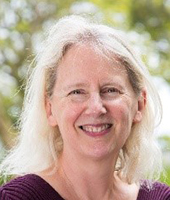 2019 Distinguished Lecturer: Prof. Karen Hudson-Edwards, University of Exeter, UK
2019 Distinguished Lecturer: Prof. Karen Hudson-Edwards, University of Exeter, UK
Karen Hudson-Edwards is based in the Environment & Sustainability Institute and the Camborne School of Mines at the University of Exeter, where she is a Professor of Sustainable Mining. Her research focuses on understanding the character and geochemical mobility of mine wastes, and on designing management and remediation schemes to lessen their impacts on ecosystem and human health. Read more
Tour Information
- Monday 25 November: Faculty of Environmental Science & Engineering, Babes-Bolyai University, Cluj-Napoca, Romania – Lectures 1 & 2
- Wednesday 27 November: Geological Survey of Slovenia, Ljubljana, Slovenia – Lectures 1, 2 & 3
- Friday 29 November: Jagiellonian University, Krakow, Poland – Lectures 2 & 3
- Monday 13 January: Charles University, Prague, Czech Republic – Lectures 2 & 3
Lecture 1: The What, Where, How and Why of Mine Tailings
Tailings are wastes comprising mixtures of crushed rock and processing fluids from mills, washeries, or concentrators that remain after the extraction of economic metals, minerals, mineral duels or coal from the mined resource. They contain potentially toxic metals and metalloids and can be very reactive, generating acidity or alkalinity and affecting ecosystem and human health. To understand their impacts we must ask the what, where, how and why questions.
Recorded at the Geological Survey of Slovenia, Ljubljana, Slovenia.
Lecture 2: The Global Biogeochemical and Health Impacts of Mining
Mining is a vital part of the global economy, but unmanaged releases of mine wastes can affect the health of humans, ecosystems, water, soil and Earth surface environments such as rivers, estuaries, oceans and the atmosphere. New technological developments and multi-disciplinary collaborations are leading to new insights into the relationship between mining and the health of the Earth, and the effect of mining on global biogeochemical cycles.
Recorded at the Geological Survey of Slovenia, Ljubljana, Slovenia.
Lecture 3: Environmental Minerals: Bacteria, Worms, Dusts, Toxins and the Human Body
Environmental minerals are naturally-occurring or anthropogenically-derived, inorganic or organic, often formed through biological processes, crystalline to very poorly crystalline and have fixed or variable compositions. They occur in virtually all Earth Surface environments, including the human body. Novel nano- to macro-scale technologies are allowing scientists to probe them in more detail than ever before.
Recorded at the Geological Survey of Slovenia, Ljubljana, Slovenia.
Distinguished Lecture Tour 2018
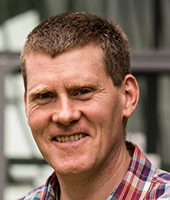 2018 Distinguished Lecturer: Dr. Jim McQuaid, University of Leeds, UK
2018 Distinguished Lecturer: Dr. Jim McQuaid, University of Leeds, UK
Dr Jim McQuaid is based in the School of Earth and Environment at the University of Leeds. His research is primarily focused upon observations of the composition of both gas phase and aerosol species in the atmosphere. Over the last 20 years he has participated in a large number of research campaigns both ground-based and airborne across the globe. He has been involved in studying a range of diverse topics including long range transport of pollutants across the Atlantic and over Europe, emissions from biomass burning activities in South and West Africa as well as from the Amazon and more recently the distribution of ice nucleating particles in remote regions. Read more
Tour Information
- Friday 16 November: Institute of Geological Sciences, Jagiellonian University, Krakow, Poland – Lectures 1 and 4
- Monday 19 November: Institute of Geography and Earth Sciences, Eötvös Loránd University, Budapest, Hungary – Lectures 2 and 4
- Tuesday 20 November:Department of Earth and Environmental Sciences, University of Pannonia, Veszprém, Hungary – Lecture 1
- Thursday 22 November: Dept. of Matter Structure, Atmospheric and Earth Physics and Astrophysics, University of Bucharest, Bucharest, Romania – Lecture 1
- Wednesday 5 December: Department of Geophysics, University of Zagreb, Zagreb, Croatia – Lectures 1 and 3
Lecture 1: Geoengineering the Climate
Iron fertilisation of the oceans, injecting particles high into the atmosphere and other methods that might reduce the effects of climate change. However their interactions go far beyond that for which they are designed, we must fully understand the whole cycle of such actions before committing ourselves to them.
Recorded at the Department of Geophysics, University of Zagreb, Croatia.
Lecture 2: The impact of volcanic eruptions on local, regional and global scales
Major historic eruptions such as Krakatoa, Laki and Tambora had huge implications across the planet far beyond their immediate impact on the local region. These will be described and we will discuss how they have helped our understanding of nature’s power. More recently, eruptions such as Pinatubo and El Chichón have allowed us to test our understanding of the global atmosphere whilst significant financial losses associated with the eruption of the Icelandic volcano, Eyjafjallajökull in 2010 have resulted in significant focus in our efforts to monitor and predict such eruptions including systems to monitor post eruption allowing impacted airspace to reopen as soon as possible.
Recorded at the Institute of Geography and Earth Sciences, Eötvös Loránd University, Budapest.
Lecture 3: The role of atmospheric mineral dust in modifying surface albedo
Mineral dust blowing off the Sahara produces a number of changes in local marine geochemistry resulting in algal blooms that can change the oceanic ecosystems, which can have a profound effect upon the global albedo both near field and at significant distance from the emission.
Recorded at the Department of Geophysics, University of Zagreb, Croatia.
Lecture 4: High altitude mineral dust and ice clouds
High in the atmosphere supercooled water can exist in the liquid phase well below 0 °C, in fact ultra pure water does not freeze until around -38 °C. In order to freeze, water droplets need a helping hand in the form of a tiny fragment of material known as an ice nucleating particle (INP). But what exactly is an INP? What is it made of? Recent studies have started to help us unpick what makes for a good INP.
Recorded at the Institute of Geography and Earth Sciences, Eötvös Loránd University, Budapest.
Distinguished Lecture Tour 2017
 2017 Distinguished Lecturer: Prof. Dr. Lenny H.E. Winkel, ETH Zurich, Switzerland
2017 Distinguished Lecturer: Prof. Dr. Lenny H.E. Winkel, ETH Zurich, Switzerland
Prof. Dr. Lenny H.E. Winkel is currently Assistant Professor at ETH Zurich (Swiss Federal Institute of Technology in Zurich) and group leader at Eawag (Swiss Federal Institute of Aquatic Science and Technology) in Duebendorf, Switzerland. She did her undergraduate studies in Geology at Utrecht University (the Netherlands) and obtained her Ph.D. in Geochemistry in 2006 at ETH Zurich, followed by postdoctoral research positions at Eawag and University of Grenoble, (France), University of Aberdeen (UK) and the Technical University of Crete (Greece) in the frame of an EU funded Marie Curie project. Read more
Tour Information
- Friday 20 October: Institute of Geography and Earth Sciences, Eötvös University Budapest (ELTE), Budapest, Hungary – Lectures 1 and 2
- Monday 23 October: Babes-Bolyai University, Faculty of Environmental Science & Engineering, Cluj-Napoca, Romania – Lecture 1
- Wednesday 25 October:Czech Geological Survey, Prague, Czech Republic – Lectures 2 and 3
- Thursday 26 October: Biology Centre of the Czech Academy of Science and the University of South Bohemia, Czech Budweis, Czech Republic – Lecture 3
Lecture 1: Arsenic contamination of groundwaters
Natural contamination of aquifers with arsenic (As) affects over 150 million people around the globe. Most severely affected regions are located in South and Southeast Asia but also areas in Europe (e.g., the Pannonian Basin) are affected. Exposure to elevated levels of arsenic occurs through drinking contaminated water but also via eating food prepared with arsenic-enriched water, among other exposure routes. Long-term exposure to arsenic can lead to chronic arsenic poisoning, referred to as arsenicosis, which leads to serious health effects (e.g., skin lesions and cancers) and eventually to death. This talk will focus on the biogeochemical factors controlling the release of arsenic in groundwaters. It will also show how human actions, such as extensive groundwater pumping in areas affected by natural arsenic contamination, can lead to contamination of previously uncontaminated aquifers. Finally, methods of removing arsenic from groundwater will be discussed.
Recorded at the Institute of Geography and Earth Sciences, Eötvös University Budapest (ELTE)
Lecture 2: Global biogeochemical cycling of selenium
Selenium (Se) is an important micronutrient for humans and animals as it is a key component of selenoproteins that serve a wide range of biological functions. Understanding selenium cycling in the environment is complex as selenium is a redox sensitive element that can occur in many chemical forms (i.e., species) in all Earth’s spheres (i.e., lithosphere, biosphere, hydrosphere and atmosphere). Since the environmental distribution and chemical speciation of selenium is closely related to environmental health issues, it is of major importance to better understand the factors that control its distribution and biogeochemical cycling, from the molecular to global scale. Climate plays a key role in global selenium cycling, firstly by controlling soil properties and thus selenium retention in soils and secondly, the atmosphere itself is an important reservoir of selenium and thus a potential source of selenium to terrestrial ecosystems and agricultural soils. Climatic processes and atmospheric cycling can thus affect selenium status of soils and finally of food crops. However, the effect of climate on terrestrial selenium distributions as well as atmospheric cycling of selenium and deposition to the surface is still largely unknown. This talk will give new insights in the atmospheric sources, sinks and fluxes of selenium and how these are linked. Furthermore, it will be shown how various geochemical techniques can be used to analyse selenium speciation and concentrations in a wide range of environmental matrices.
Recorded at the Institute of Geography and Earth Sciences, Eötvös University Budapest (ELTE)
Lecture 3: Predicting broad-scale environmental distributions of trace elements
Many trace elements are important for human health as they function as essential micronutrients, however, these elements are often only required in a narrow range of concentrations: too low dietary intakes can lead to deficiency and too high intakes to toxicity. Other elements are toxic at all dietary intake levels. Many health issues related to unsafe levels of trace elements are related to the environmental concentrations and distributions of these elements (e.g., in soils, crops and groundwater). However, in many locations in the world, these distributions are still
largely unknown as analysis of trace elements can be expensive and time-consuming. In order to pinpoint areas where further studies are required, it is important to have the ability to predict areas at risk of occurrences of unsafe levels of trace elements. In this talk it will be shown how systematic broad-scale surveys of trace elements can be used, in combination with environmental factors, to predict concentrations of trace elements in soils and groundwaters in regions where this information is not available. Examples will include predictions of soil selenium concentrations on a global scale and regional scale predictions of arsenic in groundwater. Furthermore, it will be discussed how future climate projections can be used to predict future changes in trace element distributions.
Recorded at the Faculty of Science, University of South Bohemia
Distinguished Lecture Tour 2016
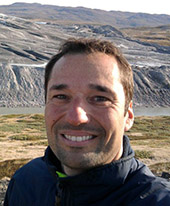 2016 Distinguished Lecturer: Prof. Alexandre Anesio, University of Bristol, UK
2016 Distinguished Lecturer: Prof. Alexandre Anesio, University of Bristol, UK
Alexandre Anesio’s research interests are broad and combine concepts from Geography, Biology and Chemistry to understand carbon cycle in the cryosphere. His research has concentrated in two broad areas. Firstly, he studies microbes in the cryosphere. Against all expectations glaciers harbour a highly active microbial community. Bacteria, viruses and microscopic plants thrive in conditions that might be analogous to other planets and to early Earth. Second, he is also interested in a range of climate (e.g., UV radiation and acid rain) and human impacts (e.g., mining, sewage, pesticides) on freshwaters. Read more
Tour Information
- Friday 21 October: M.P. Semenenko Institute of Geochemistry, Mineralogy and Ore Formation, National Academy of Science of Ukraine, Kiev, Ukraine – Lecture 3
- Monday 24 October: Institute of Biology, Romanian Academy, Bucharest, Romania – Lectures 1 and 2
- Wednesday 26 October:Department of Biology, University of Ljubljana, Ljubljana, Slovenia – Lectures 1 and 2
- Friday 28 October: Institute of Geological Sciences, Jagiellonian University, Krakow, Poland – Lectures 1 and 3
Lecture 1: Biogeochemical cycles and microbial processes in icy habitats
It is now recognised that large expanses of ice in the polar regions are inhabited by active microbial communities forming one of the biomes of Earth. Microbes on ice are diverse, play an important role in the cycling of nutrients and can even modify the physical environment they live. For instance, microbial processes at the surface of glaciers and ice sheets can lead to the accumulation of labile dissolved and particulate organic carbon and this in turn have consequences to ice wastage and the delivery of nutrients to adjacent ecosystems. The accumulation of cells often seen at the surface of the ice clearly results in ‘biological darkening’ of glacier surfaces. Such darkening increases the amount of incident shortwave radiation available for ice ablation, and could be a contributing element to glacier thinning and wastage. Nitrogen fixation is also potentially important as a source of nitrogen to microbial communities in the debris rich marginal zone close to the terminus of the glaciers and ice sheets, where this may aid the colonization of subglacial and moraine-derived debris as glaciers retreat as a result of climate change. More recently, data have shown that viruses are both abundant and dynamic at the surface of glaciers too. Viruses at the surface of glaciers cause significant mortality to bacterial communities and consequently, they have an important effect on the cycling of nutrients of these habitats. Liquid water also occurs at the beds of temperate and polythermal glaciers, as well as large sectors of polar ice sheets. In contrast with glacial surface environments, subglacial habitats have higher rock:water ratios, higher contact times between the bedrock and water, and a lack of light and redox potential that tend towards anoxic conditions, particularly during periods with long hydraulic residence times. Iron and sulphur reduction and oxidation, and production of methane are a few examples of processes in subglacial habitats that are important at local and potentially global scales.
Recorded at the Institute of Geological Sciences, Jagiellonian University, in Krakow, Poland.
Lecture 2: Microbiological approaches in biogeochemistry: from genes to experiments
Biogeochemistry as a discipline deals with the chemical composition of the Earth (and beyond) and it is an integrated field that includes chemical, physical, geological, and biological processes and reactions. Microbial processes have a particularly important role in defining the geochemical characteristics of natural habitats. Through knowledge of the microbial community in a habitat and their activities, transformations at the micro scale can sometimes be scaled up to understand major shifts in ocean, continent and atmospheric chemistry. Next-generation sequencing (NGS), also known as high-throughput sequencing has revolutionised the way microbes can be investigated in their natural system. Microbial diversity and function are now commonly investigated in a variety of systems revealing key chemical reactions that are mediated by microbes. This knowledge combined with the chemical composition of natural habitats helps our understanding of natural reactions, particularly in habitats that are remote and difficult to conduct in situ experiments or collect large volumes of samples (e.g., hydrothermal vents, subglacial lakes). Measurements of microbial activity are also important and vital to show where bacterial populations are important drivers of e.g., carbon and nitrogen fixation, organic carbon transformations, weathering with implications for biogeochemical cycles at local and global scales. A combination of microbial measurements and biogeochemical modelling can also further our understanding of the chemical composition of natural ecosystems and increase the power for predicting chemical transformations in the future in response
to climate change. In this talk, I will cover a variety of microbiological methods used to improve our understanding of the interactions between Earth, environmental systems, and microbial life.
Video not available
Lecture 3: The interplay between weathering and microbes during soil formation
Glaciers are receding rapidly all over the Northern hemisphere, creating new terrestrial habitats in the form of freshly exposed soils. Those habitats have a long history of being used as model systems to study initial stages of succession, particularly in the Alps, where plant cover develops just few years after the deglaciation. On the other hand, in the High Arctic forefields, plant life establishes itself very slowly and a visible dense plant cover does not develop until after 1000 years of exposition enabling us to study microbially mediated processes that over time lead to the development of soils. We have employed a combination of geochemical, microbial activity and diversity measurements in soils to generate an integrated theory of the functional and genetic development of Arctic soils recently
exposed after glacial retreat. Data from Midtre Lovénbreen Svalbard glacier show that the initial microbial inoculum for the freshly exposed soils largely come from endogenous organisms inhabiting the basal ice and sediment underneath the glacier, as evident by higher concentration of Betaproteobacteria and other subglacial dwelling microorganism. Phototrophic organisms typical for the supraglacial habitats were also present but in lower abundances. Pyrite oxidation an important energy source for Thiobacillus dominated in the initial stages. The microbial community composition changed with age, forming distinct microbial consortia at different stages of the succession. The microorganisms themselves accumulated very little carbon and the available pool was quickly utilized by the heterotrophic members of the microbial community. The taxonomical as well as functional diversity of the community increased with soil age, particularly the number of chemoorganotrophs as well as anaerobic and methane oxidisers. The concentration of Acidobacteria gradually increased, marking the transition into more developed soils. This study showed that microbial processes in the forefields are thus fundamental for fixation, transport and remineralisation of nutrients in freshly deglaciated soils and for the development of soils that can sustain higher forms of life, such as plants and small invertebrates. There is a strong interplay between geochemical and microbial processes during soil formation.
Recorded at the Faculty of Science, University of South Bohemia
Distinguished Lecture Tour 2015
 2015 Distinguished Lecturer: Prof. Miryam Bar-Matthews, Geological Survey of Israel
2015 Distinguished Lecturer: Prof. Miryam Bar-Matthews, Geological Survey of Israel
Prof. Miryam Bar-Matthews obtained her PhD in geology from the Hebrew University of Jerusalem and is currently a Senior Research Scientist at the Geological Survey of Israel. Her main field of research is the reconstruction of terrestrial palaeoclimate during the last 500,000 years using high resolution cave Speleothem records. The research covers a wide spectrum: understanding karst processes from the rainfall source (oceans) to sink (caves); the use of isotope geochemical tracers as paleoclimate proxies; how speleothem records can be used to determine critical changes in the regional hydrological cycle, with their implications for rapid aridification/desertification processes and impact on human settlement and migration patterns. Most of her research is based in the eastern Mediterranean and North East Sahara regions, but ongoing research also focuses on South Africa and the southern hemisphere. She was awarded the 2013 Hans Oeschger medal of the European Geociences Union. Read more
Tour Information
- Monday 19 October: M.P. Semenenko Institute of Geochemistry, Mineralogy and Ore Formation, National Academy of Science of Ukraine, Kiev, Ukraine – Lecture 2
- Monday 26 October: Institute for Geological and Geochemical Research, Hungarian Academy of Sciences, Budapest, Hungary – Lectures 1 and 2
- Wednesday 28 October: Karst Research Institute, Postojna, Slovenia – Lectures 1 and 2
- Friday 30 October: Department of Geography, University of Zadar, Zadar, Croatia – Lectures 1 and 3
Lecture 1: Speleothems as paleoclimate indicators
Speleothems growth is associated with a series of processes beginning with rainwater dissolving biogenic soil CO2 to form carbonic acid. Dissolution of soil carbonate and the host rock occur during the downward migration of the carbonated waters. On reaching the open space of the cave, the solutions are supersaturated in CO2 with respect to the cave atmosphere and deposition of calcium carbonate occurs as a result of CO2 degassing. Speleothems may grow continuously in caves when water is always replenished in the unsaturated zone, but cannot grow in the water-depleted conditions of arid/hyper-arid deserts, or at very low temperatures where water is frozen and vegetation is scarce. Speleothems preserve geochemical records of global, regional, and local climate as they grow, particularly in their oxygen (d18O) and carbon (d13C) isotope composition. The d18O values of speleothems reflect the d18O of the water from which they grew and temperature of deposition provided the calcite has precipitated under conditions of isotopic equilibrium. The cave water d18O depends on a number of factors mainly the source of clouds (the sea surface), the atmospheric and hydrological evolution of rainfall. Thus, speleothems d18O records the global, regional and local environmental conditions through the intimate connections between sea surface conditions, and climatic controls on origin of rainfall, temperature, and rainfall amount. d13C values of calcite speleothems mainly reflect changes of the vegetation type in the vicinity of a cave, primarily differences in the photosynthetic carbon fixation pathways between C3 and C4 type vegetation, but also water-rock interaction and degassing processes. Speleothems can be accurately dated by the Uranium-Thorium (U-Th) isotopic method, and the consequent knowledge of their growth periods combined with their isotopic composition variations, provide ideal tools for continental paleoclimate reconstruction. Their independent chronology offers opportunities to critically assess leads and lags in the climate system. Careful calibration studies of the present-day rainfall, cave water, cave atmosphere and recent speleothems, enable better understanding sub-annual climate record.
Recorded in Budapest (Hungary) at the Institute for Geological and Geochemical Research, Hungarian Academy of Sciences.
Lecture 2: Novel techniques in speleothems research for paleohydrological studies
Oxygen isotope composition (d18O) in speleothems is a major paleoclimate and paleoenvironment proxy but its full use requires either knowledge of cave temperatures or cave water d18O. Speleothem d18O combined with carbonate clumped isotopes paleothermometry is of major importance for unravelling paleotemperature and cave water d18O. Further basic information can be gained from the analysis of d18O and dD in fluid inclusions extracted from speleothems, including the reconstruction of the d18O-dD relationships that are crucial for understanding the relative humidity above the sea and origin of storm tracks. In regions located near lakes or enclosed seas there are deviations from the relationships defining the global Meteoric Water Line (MWL) of D=8*d8O + 10‰ (i.e., d-excess of 10‰). For example, in the Eastern Mediterranean (EM) region, the present-day rainfall is defined by local Mediterranean Meteoric Water Line (MMWL) with d-excess values of 20-30‰. The deviation from MWL is due to the higher relative humidity gradient over the EM Sea. d-excess values determined from fluid inclusions in speleothems from the EM during the last glacial were closer to the MWL, mainly due to change in the relative humidity gradient.
Carbonate clumped isotopes is a new paleothermometer proxy that is based on the abundance of 13C-18O bonds in the carbonate lattice relative to that expected when the isotopes are randomly distributed among all isotopologues (using the D47 parameter). Since it measures the thermodynamic ordering preference of the two heavy isotopes to bind with each other, D47 is temperature dependent. However, marked deviations from ‘equilibrium’ D47-T calibration relationship have been observed in speleothems due to CO2 degassing from a thin film of drip water, which leads to irreversible 13C enrichment and reversible 18O enrichment and D47 depletion in the speleothems. These kinetic effects thus give further insight to the understanding of whether calcite speleothems are deposited in isotopic equilibrium, but also pose a challenge for accurate paleothermetry that can only be resolved through careful calibration studies.
Recorded in Budapest (Hungary) at the Institute for Geological and Geochemical Research, Hungarian Academy of Sciences.
Lecture 3: Water availability in Middle East and North Africa and the connection to human dispersal: insights from speleothems research
Speleothems research is of major importance for the reconstruction paleo-water availability in desert and semi-desert regions such as the Middle-East and North Africa, located at the geographical meeting of Eurasia, Africa, the Mediterranean Sea, Red Sea and Indian Ocean, and at the boundary between high-to-mid latitude and tropical-subtropical climate systems. The geographical duality of desert existing adjacent to Mediterranean-type climate region played, and still plays, a major role on the water availability in the Middle East and North Africa.
Two mechanisms that represent fundamentally different climatic driving forces have led to positive fresh water balance in the region: 1. Monsoon-driven processes leading to increased rainfall over the Sahara, which are associated with northward penetration of the Inter Tropical Convergence Zone (ITCZ) over the Arabian and African continents.2. Enhanced westerly wind activity that resulted in increased regional rainfall from Atlantic-Mediterranean sources over the entire Mediterranean basin. This westerly system penetrated further south into the north-east corner of the Sahara Desert during extreme wet periods. The exact duration of the wet intervals is largely based on accurate dating of the timing of speleothems growth and their stable isotopic composition, which shows that peak deposition of speleothems in present-day arid areas coincided with peak interglacials, i.e, with astronomically driven maximum summer insolation at 65°N latitude and maxima in radiation from the 19 – 23 ka cycles of orbital precession. These periods could have occurred during contemporaneous intensification of the monsoonal and the westerly system. The times that can be firmly established for extreme wet conditions in southern Arabia, North Africa and the Middle East are also the times indicated to be the most favorable “climatic windows” for the dispersal of hominids and animals out of the African continent. These intervals are dated at: 250-239 ka BP, 210-193 ka BP, 138-120 ka BP, 108-98 ka BP, 87-84 ka BP and early Holocene from 10-6.5 ka BP. The wetter conditions could provide potable water sites across presently arid land surface barriers, such as the desert regions in Libya, Egypt and Southern Jordan and Israel. The “wet” periods show some variation in duration on a regional scale. Between these periods, severe dry conditions prevailed in the desert regions.
Recorded in Zadar (Croatia) at the Department of Geography, University of Zadar.
Distinguished Lecture Tour 2014
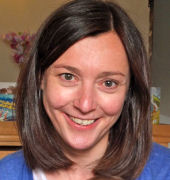 2014 Distinguished Lecturer: Dr. Rachael James, University of Southampton, United Kingdom
2014 Distinguished Lecturer: Dr. Rachael James, University of Southampton, United Kingdom
Rachael’s research focuses on the development and application of chemical and isotopic techniques to improve our understanding of earth and planetary processes- both now and in the past. Read more
Tour Information
- Monday 10 November: Charles University, Prague, Czech Republic – Lecture 1
- Monday 24 November: Institute of Biology, Romanian Academy, Bucharest, Romania – Lectures 2 and 3
- Wednesday 26 November: Faculty of Environmental Science and Engineering, Babes-Bolyai University, Cluj-Napoca, Romania – Lectures 1 and 2
- Friday 28 November: Faculty of Geology and Geography, Sofia University, Sofia, Bulgaria – Lecture 1
Lecture 1: Weathering, ocean chemistry and climate change: New insights from non-traditional metal stable isotopes
Many lines of evidence, from both marine and terrestrial records, suggest that there have been dramatic changes in the Earth’s climate system during the last 65 Myr that occur on both long (geological) and short timescales. The mechanisms that are responsible for these changes are less well established, but there is growing evidence that amongst the primary controls is the concentration of atmospheric carbon dioxide (CO2), the principal greenhouse gas.
Weathering of continental rocks leads to drawdown of atmospheric CO2. Weathering rates are controlled primarily by temperature and rainfall, creating a dynamic link between weathering and climate that represents an important feedback process in the Earth’s climate system. As weathering products are ultimately delivered to the oceans via rivers, weathering also regulates ocean chemistry which, in turn, affects primary productivity and also levels of atmospheric CO2.
We have identified a number of metal stable isotopes, including lithium and magnesium, which are sensitive to changes in continental weathering and erosion. In this talk, we will discuss their strengths and weaknesses, their potential for preservation in marine sedimentary records, and how these analyses have opened up new perspectives in understanding the linkages between weathering and climate.
Recorded in Budapest (Hungary) at the Institute for Geological and Geochemical Research, Hungarian Academy of Sciences.
Lecture 2: Linkages between methane release from Arctic shelf sediments and climate change
Methane hydrate is a solid ice-like substance composed of methane and water molecules. Methane hydrates occur naturally in marine environments, where methane gas is available and temperatures are relatively low and pressure is relatively high. Estimates of the quantity of hydrate-bound gas in marine sediments range from 500 to 3000 Gt of carbon; additionally, hydrates are frequently underlain by free gas reservoirs that may contain another ~1800 Gt of carbon. Together, the hydrate and underlying free gas reservoirs comprise almost half of the Earth’s organic carbon. Release of methane from hydrate may have contributed to rapid climate change in the past, and it is considered to be a significant natural hazard because hydrate decomposition could destabilize sediments, creating landslide and tsunami risk.
Most climate models predict a rapid increase in Arctic air and surface water temperatures within the next decades, and direct observations of waters at 250 m depth in the eastern Fram Strait record a +1˚C increase between 1998 and 2006. In 2008, we discovered more than 250 plumes of methane gas bubbles rising from the seabed west of Svalbard. Many of these plumes were discovered close to the depth at which the gas hydrate stability zone is predicted to intersect with the seafloor in this area (close to 400 m water depth) suggesting that the bubble plumes may be the result, at least in part, of methane release by the dissociation of gas hydrates beneath the seabed, due to increases in water temperature.
A key question, which will be addressed in this talk, is how much of this methane escapes into the atmosphere where it has the potential to affect climate? To this end, we assess the extent to which fluxes of methane from Arctic sediments are modified by anaerobic oxidation (in sediments) and aerobic oxidation (in the water column). We will also discuss the evidence for gas hydrate as a source of Arctic methane, and characterise the carbon isotopic signature of the methane flux to the atmosphere from the Arctic seafloor.
Video not available
Lecture 3: Monitoring and impacts of leakage from sub-seafloor CO2 storage sites
Anthropogenic emissions of carbon dioxide (CO2), from fossil fuels and other industrial sources, are perhaps the biggest threat to the climate system yet many economies will remain reliant on these technologies for several decades. Carbon capture and storage (CCS) in deep geological formations provides the only effective option to prevent these emissions from entering the Earth’s atmosphere. Many potential CCS sites are located offshore, hundreds of meters below economically and culturally important shelf seas. However, there is widespread concern about the possibility of leakage, and its potential environmental impact, which is currently unknown.
To address this gap, we have conducted the world’s first controlled sub-seafloor release of carbon dioxide. 4.2 tonnes of CO2 were released over a period of 37 days, and the migration and impact of this release was assessed using a variety of geophysical, acoustic, chemical and biological techniques. In this talk, we will describe the experiment, evaluate different methods for monitoring the migration of CO2 through the seafloor sediments and into the water column, and assess the impacts of CO2 release on sediment biogeochemistry and the benthic ecosystem. We will also discuss the importance of communicating this experiment to the local community.
Recorded at the Faculty of Science, University of South Bohemia
Distinguished Lecture Tour 2013
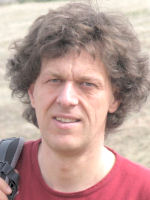 2013 Distinguished Lecturer: Pr. Thomas Röckmann, Utrecht University, Netherlands
2013 Distinguished Lecturer: Pr. Thomas Röckmann, Utrecht University, Netherlands
Thomas Röckmann is a leading specialist in the development and application of isotope techniques to atmospheric research. He is head of the Atmospheric Physics and Chemistry Group at the Institute for Marine and Atmospheric research Utrecht (IMAU) of Utrecht University with currently 27 group members. His group operates a large and innovative atmospheric chemistry laboratory specialized in isotope ratio measurements on numerous trace species. His research covers a wide field of applications with isotope studies, e.g. global trace gas budgets, detailed kinetic isotope effects, impact of anthropogenic activities on the atmosphere or stratosphere-troposphere exchange. At the age of 44, he has over 120 publications in peer refereed journals (ISI listed). He participates or has participated as PI for isotope analysis in the EU projects EUROHYDROS (coordinator of WP2), SCOUT-O3, CRYOSTAT, EUPLEX and TROCCINOX and the European ice coring project NEEM (FP7). Read more
Tour Information
- Monday 25 November: Lithosphere Fluid Research Laboratory, Institute of Geography and Earth Sciences, Eotvos University, Budapest, Hungary – Lectures 1 and 3
- Wednesday 27 November: Faculty of Environmental Science and Engineering, Babes-Bolyai University, Cluj-Napoca, Romania – Lectures 1 and 2
- Friday 29 November: Faculty of Physics and Applied Computer Science, AGH University of Science and Technology, Krakow, Poland – Lecture 2
- Friday 13 December: Czech Geological Survey, Prague, Czech Republic – Lectures 1 and 3
Lecture 1: Oxygen isotope anomalies in the atmosphere
Isotope measurements belong to the most important tracers to study the Earth system. In atmospheric research, isotope effects are used to identify and quantify individual production and removal processes of atmospheric trace gases. For oxygen, with three stable isotopes, 16O, 17O and 18O, measurements show that the variations between these three isotopes in the atmosphere are anomalous, also called “non-mass-dependent”. The most important example for an anomalous oxygen isotope effect is the formation reaction of ozone (O3).
At the same time, non-mass dependent oxygen isotope compositions have been detected in many other atmospheric molecules. In fact, there is almost no atmospheric species for which an anomaly has not been detected, or at least postulated. This is because O3 is at the center of atmospheric oxidation reactions. Via chemical reactions the oxygen isotope anomaly is transferred from O3 to other atmospheric compounds. Measuring the isotope anomaly therefore opens new opportunities to investigate chemical reaction mechanisms on the one hand, and mass fluxes between different species and reservoirs on the other hand. What started out as a peculiar isotope anomaly almost three decades ago has grown into a new research field that spans the full range from molecular physics studies to the reconstruction of climate parameters in the past.
Lecture 2: Reconstructing changes in atmospheric trace gases in the industrial era from isotope measurements on air extracted from polar firn
In many cases, direct and comprehensive measurements on atmospheric composition are only available for the last 2-3 decades. To obtain information on changes before that time, air archives are needed, and polar ice cores are excellent archives of past atmospheric composition. Whereas available ice core records can go almost a million years back in time, air extracted from the firn, the top part of an ice sheet, can be used to cover the period of several decades to a century back in time. We have measured mixing ratio and isotopic composition of numerous trace gases on air samples extracted from firn at the NEEM ice core drilling site in Greenland. These data are combined with previously published measurements to reconstruct consistent time series of isotope variations over the past 6 decades using a state of the art firn air model. It is important to take into account gravitational and diffusive fractionation in the firn air, which are in some cases of the same order as the actually isotope changes in the atmosphere. For example, for 13C in methane (CH4), reconstructions from individual sites are not always mutually consistent among the different sites, which emphasizes that the precise knowledge of the diffusive properties in the firn is very important. On the other hand, for nitrous oxide (N2O) the isotope reconstructions between different sites agree well and allow reconstruction of a consistent isotope history that can be used to reconstruct the variations of the sources of N2O in the past.
Video not available
Lecture 3: The isotopic composition of long-lived trace gases in the stratosphere
Molecular hydrogen (H2) in the atmosphere has not been studied in great detail in the past because it does not directly affect the radiation balance. However, H2 interacts with other atmospheric compounds via chemical reactions. The prospect of using H2 as possible energy carrier in the future has led to renewed interest in understanding its atmospheric budget. Because of the large relative mass difference between hydrogen (H) and deuterium (D), isotope effects in molecular hydrogen (H2) are particularly large and isotope measurements may provide additional information on the relative strength of the individual sources and sinks of H2. Using an analytical system that enables isotope measurements on nanomolar quantities of H2, we have investigated the isotopic composition of the different sources of H2 in considerable detail. Hydrogen produced from photochemical processes is relatively enriched in deuterium, whereas hydrogen from combustion processes is depleted in D, and hydrogen formed in biological systems is extremely depleted in D.
In addition, in the framework of the European project EUROHYDROS, we have carried out regular isotope analyses on air samples collected at several sites worldwide in order to determine the spatial and temporal variability of the isotopic composition of H2 in the atmosphere. In order to interpret these data, a full H2 isotope scheme was implemented in the global model TM5. The results show that isotope measurements provide useful constraints on the global H2 budget.
Distinguished Lecture Tour 2012
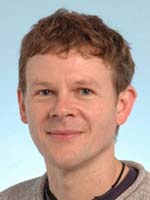 2012 Distinguished Lecturer: Pr. Tim Elliott, University of Bristol, UK
2012 Distinguished Lecturer: Pr. Tim Elliott, University of Bristol, UK
Tim Elliott is an isotope geochemist who studies planetary formation and evolution. Specific interests range from modern geological processes to meteorite cosmochemistry, using an approach that focusses on high precision isotope analyses. Read more
Tour Information
- 19 November: Institute of Geological Sciences, Warsaw University, Poland – Lectures 1 and 3
- 20 November: Institute of Geological Sciences, Wrocław, Poland – Lecture 1
- 21 November: Faculty of Geology and Geography, Sofia University, Bulgaria – Lecture 1
- 22 & 23 November: Faculty of Environmental Science, Universitatea Babes-Bolyai, Cluj-Napoca, Romania – Lectures 1 and 3
Lecture 1: The Origin of Precious Metals on Earth
Gold has value for its intrinsic rarity and noble beauty. Other more economically useful metals such as platinum (Pt) also have their intrinsic value enhanced by their scarcity. Yet, the abundance of these rare metals is actually much larger than simple models of the evolution of the Earth would predict. The so-called highly siderophile elements, such as gold and platinum should be efficiently incorporated into the core and thus locked within the inaccessible interior of the Earth since its formation at the beginning of Earth History.
However, the abundance of gold in the outer portion of the Earth is several orders of magnitude greater than that expected after core formation. This has long been attributed to the ‘late’ addition of meteoritic material to the Earth, after the core formed. This so-called Late Veneer could have replenished the mantle with a fresh inventory of precious metals. Yet, this model has been disputed, as newer experimental data of core formation at high pressures can also potentially explain the over-abundance of highly siderophile elements.
We have been able to resolve this debate using high precision isotopic measurements, showing clearly that the late delivery of meteorites to Earth is responsible for the economic bounty of precious metals we currently enjoy. I will explain the utility of isotope measurements in this endeavour and how these analyses also open up new perspectives in understanding the behaviour of the ancient Earth.
Video not available
Lecture 2: Super Nova Contributions to the Solar System
Material that makes up the solar system represents the end-product of many different stellar explosions. This blend of material is to a first order well mixed and the individual components are hard to identify. There has been much progress identifying the type of star from which individual pre-solar grains derived from their isotopic signatures. However, the relative importance of each grain type within the mix is hard to discern. We have taken a different approach. Rather than looking for large isotopic variations in tiny grains, we have looked for tiny isotopic variation within large, bulk samples. The rationale is that any signature that has survived complete homogenisation should reflect material from a recent input to the solar system. We have identified pre-solar signatures in several elements in bulk meteorites. These point to material derived from a type II super nova. This is reassuringly in keeping with independent lines of evidence and points to a possible ‘super-nova’ trigger for solar nebula collapse.
Video not available
Lecture 3: Tracing mantle evolution with novel isotopic systems
The notion of mantle heterogeneity and its interrogation to reconstruct the evolution of the mantle was built on observed variability in radiogenic isotope systems in mantle derived melts. These measurements have been most popularly explained by recycling of crustal material, either oceanic or continental. These deductions are, perhaps inevitably, equivocal. It has therefore been as long standing goal to verify these inferences from independent lines of evidence.
Most notably, the surface environment should impart distinctive stable isotopic fractionations on the crust before its return to the mantle. In order to provide a good tracer of recycled material, however, a number of important criteria need to be satisfied:
1) the distinctive stable isotopic signature needs to be associated with a large elemental flux to be discernible after remixing into the mantle
2) the surface cycling of the element of interest needs to have remained the same as present day, or at least predictably different, in order to be able to extrapolate back the effects of recycling over geological time
3) the isotopic systems should be sensitive to the recycling process alone and not to subsequent perturbation during magmatic transport to the surface. In the last decade we have explored the potential of several stable isotope systems, with a range of masses, to these ends including Li, Mo and U.
We will discuss the strengths and weaknesses of these systems in helping to identify the presence of recycled material in shaping the composition of the current mantle. Recently the opportunity to look at the evolution of the mantle in the opposite direction has also become possible. Rather than try to work back from present via the plate tectonic cycle it is possible to observe how some of the most ancient isotopic signatures on Earth, as preserved in anomalous compositions of extinct nuclides (e.g. 182W), have been lost. Reconstructing the history of these changes offers the potential to examine the convective behaviour of the mantle, potentially before plate tectonics. We will preview what might be attempted in this burgeoning field.
Video not available
Distinguished Lecture Tour 2011
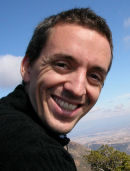 2011 Distinguished Lecturer: Dr. Karim Benzerara, CNRS and University Pierre et Marie Curie, Paris, France
2011 Distinguished Lecturer: Dr. Karim Benzerara, CNRS and University Pierre et Marie Curie, Paris, France
Dr. Karim Benzerara is specialized in geomicrobiology, mineralogy, and the study of interactions between life and minerals and fossilization. Read more
Tour Information
- 3 November: Charles University, Prague, Czech Republic – Lecture 2
- 4 November: Czech Geological Survey, Prague, Czech Republic – Lecture 1
- 7 November: Eötvös Loránd University, Budapest, Hungary – Lecture 3
- 9 November: Institute of Biology, Bucharest, Romania – Lectures 1 and 3
- 11 November: Comenius University, Bratislava, Slovakia – Lecture 1
Lecture 1: Iron biomineralization by neutrophilic anaerobic Fe-oxidizing bacteria: a nanoscale perspective
Recorded at the Institute of Biology, Bucharest, Romania
Lecture 2: Combination of transmission electron microscopy and synchrotron-based x-ray microscopy for the study of geomicrobiological samples
Geomicrobiology studies interactions between microorganisms and minerals. Working at the nanoscale on such systems is not just a methodological challenge and the use of new fancy tools. Here, I will show how we can combine Scanning Transmission X-ray Microscopy (STXM) and Transmission Electron Microscopy (TEM) to perform high spatial and energy resolution near-edge x-ray absorption fine structure (NEXAFS) and high resolution imaging on diverse samples of geomicrobiological interest. I will consider diverse samples including naturally and experimentally biomineralized bacteria, and bioweathered silicates. Spectroscopy was performed at the C K-edge, Al K-edge, Ca L2,3-edge, Fe L3-edge, and N K-edge offering the possibility to characterize diverse biochemical compounds, unique bacterial spectroscopic signatures, and iron oxidation state at microorganism-mineral interfaces. Combination of TEM and STXM provides remarkably clear chemical state-specific images of fossilized microorganisms and microorganism-mineral interfaces at the nanometer scale. This allows finding yet unreported chemical and mineralogical heterogeneities at the submicrometer-scale in ancient and recent rocks, and also reveals in experimental samples a more complex picture of a given process than that observed at a rougher scale. By reviewing studies performed on Archean stromatolites, modern Fe-oxidizing bacteria, fossils preserved in metamorphic rocks or pathological calcifications, I will show how the methodology presented here should be helpful in assessing the importance of microorganisms in the evolution of Earth’s surface chemistry and in identifying them in early Earth and planetary materials.
Recorded at Charles University, Prague, Czech Republic.
Lecture 3: Biomineralogical study of stromatolites at the nanoscale
Stromatolites are layered sedimentary structures initiated from a limited surface and forming a variety of morphologies. They are often composed of calcium carbonates and found throughout the geological record back to 3.5 Ga. While they have often been considered as one of the oldest traces of life on Earth, the relative impact of abiotic and biological processes involved in the formation of modern stromatolites is yet poorly known. We believe that a detailed study of mineralogical processes occurring in modern stromatolites would dramatically improve our understanding of ancient samples. In this talk, I will present some of our recent work on Archean stromatolites (from the Tumbiana Formation, Australia, 2.7 Gyr) and modern stromatolites from hyperalkaline lakes. I will discuss the origin of laminations in lake stromatolites; I will show how the combination of microscopy and spectroscopy techniques, including transmission electron microscopy and synchrotron-based x-ray microscopy allow evidencing diverse pools of organic matter in modern and ancient stromatolites. Finally, I will show a preliminary study of the crystallographic texture of minerals in modern stromatolites. Alltogether, this information will help discussing existing models for the formation of stromatolites and the way we interpret the geological record.
Recorded at Eötvös Loránd University, Budapest, Hungary.

